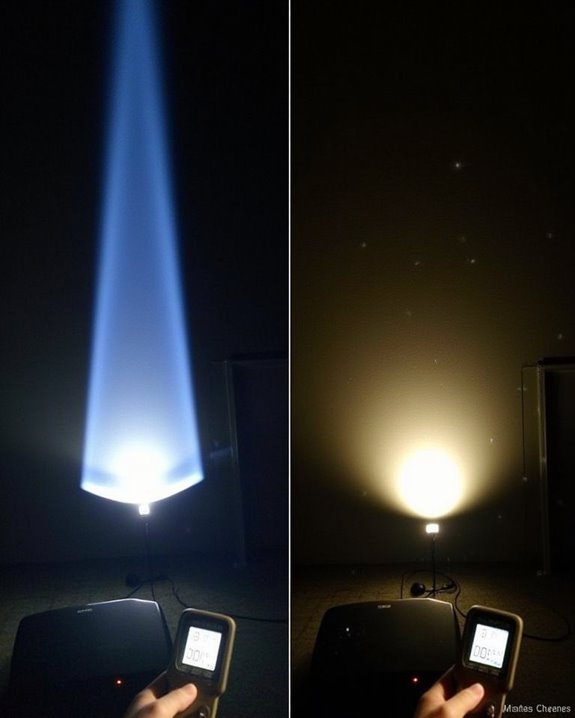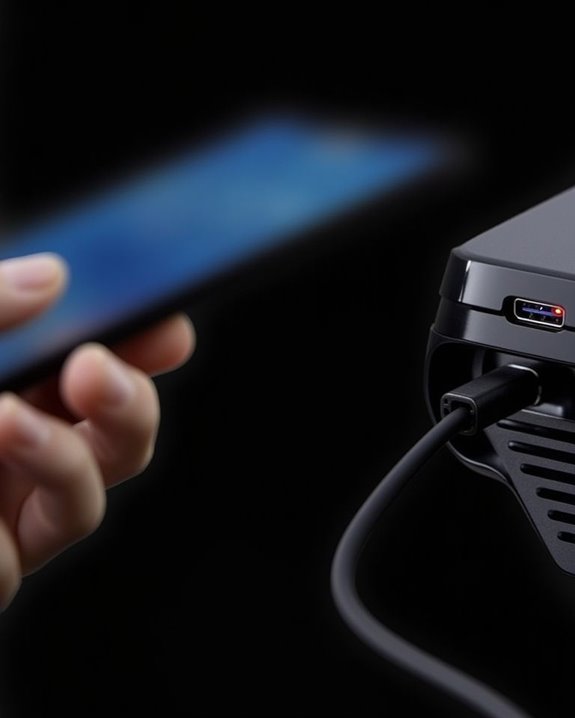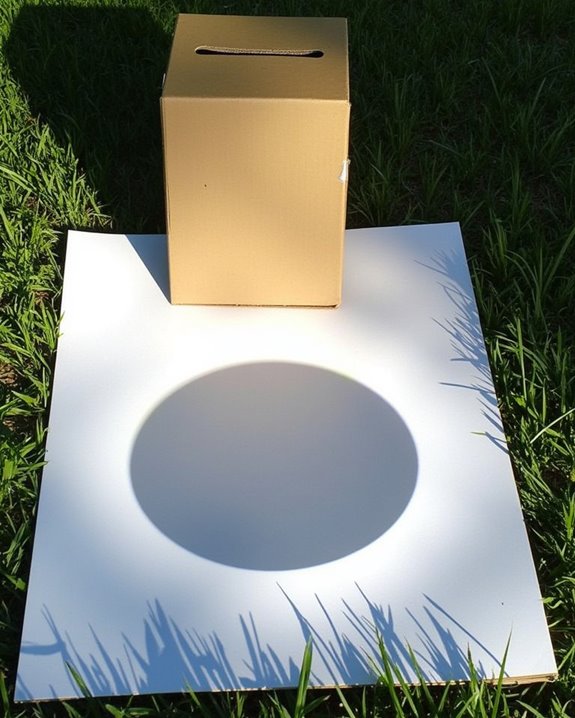You might not realize that projector headlights on cars can emit several times more concentrated light than the typical projector you use for movies at home, largely because they’re engineered for sharply focused roadway visibility rather than wide-screen image display. While projector headlights often reach 6,000 lumens in a tightly controlled beam pattern, standard TV projectors usually produce between 1,000 and 3,000 lumens spread over a broad area, resulting in very different real-world brightness levels. Understanding why these differences exist could change how you think about both technologies.
Key Takeaways
- Projector headlights typically output 700–6,000 lumens, while standard TV projectors usually range from 1,000–3,000 lumens.
- Headlights use focused, narrow beams for higher perceived brightness in a specific direction, despite sometimes lower total lumens.
- TV projectors diffuse light broadly across a screen, so their illumination appears less intense than the focused beam of headlights.
- Projector headlights’ beam pattern and focus create a brighter hotspot for road use, enhancing visibility compared to the wide, even spread of TV projectors.
- Actual perceived brightness depends on application: headlights maximize beam focus for safety, while TV projectors prioritize even image distribution.
Brightness Output: Projector Headlights vs. TV Projectors
When comparing the brightness output of projector headlights to that of standard TV projectors, it’s important to understand that each technology is engineered for very different purposes, which affects both their design and performance specifications. Projector headlights, such as halogen, HID, and LED types, typically range from 700 up to 6,000 lumens, focusing on efficiently lighting roadways while maintaining energy efficiency and adhering to legal limits. In contrast, standard TV projectors used at home usually output between 1,000 and 3,000 lumens, prioritizing color accuracy and image uniformity for screen viewing in controlled lighting. ANSI lumens provide a standardized measure of brightness for TV projectors, ensuring more reliable comparisons between models. High-end commercial cinema projectors can far exceed these values, reaching tens of thousands of lumens, but these are specialized for large venues. Additionally, gaming console projectors often feature brightness levels tailored to optimize performance in various lighting conditions, ranging from 200 ANSI lumens for dark rooms to over 10,000 lumens for well-lit spaces, demonstrating the importance of brightness and room suitability in projector design. Ultimately, brightness output depends on each device’s intended application and design goals.
How Light Focus and Beam Pattern Influence Perceived Brightness
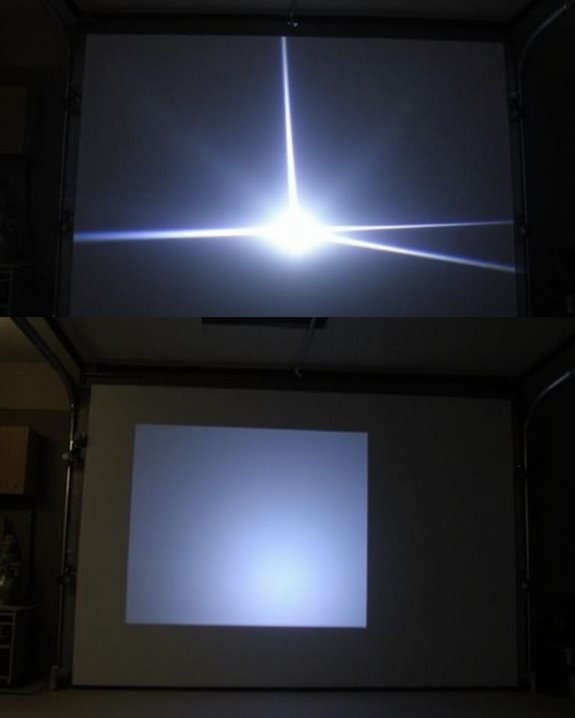
Although the raw brightness of a light source matters, the way that light is focused and distributed plays a critical role in how bright it actually appears to you. Projector headlights use precision lenses and cutoff shields to concentrate light into a narrow, defined beam, which increases the luminance and creates a sharp cutoff line that prevents glare. This focused beam results in a bright central hotspot and enhanced beam uniformity, making the illuminated area appear intensely bright, especially when combined with a high color temperature that can improve contrast and visibility. In contrast, standard TV projectors disperse light more broadly for an even image across a large screen, prioritizing uniform illumination over intensity, which lowers the perceived brightness at any single point compared to projector headlights. Projectors with high contrast ratios produce deeper blacks and sharper details, but their light is still distributed more evenly than the focused beam of headlights. Projector headlights offer better visibility and reduce glare for oncoming traffic, making them a safer and more effective lighting option for automotive use.
Understanding the Technology Behind Each Device
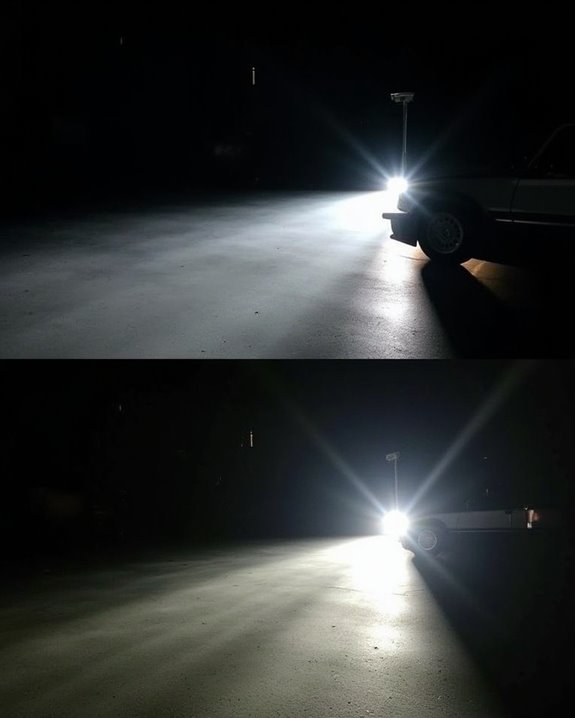
Projector headlights and conventional TV projectors rely on specialized technologies tailored to their unique purposes, which fundamentally shape how each device manages and delivers light. In projector headlights, you’ll find light sources like halogen, HID, or LED bulbs, with each offering distinct advantages in terms of color temperature, brightness, and energy efficiency. LEDs provide higher efficiency and longer life, while HIDs deliver intense illumination with a cooler, white color temperature, and halogens are more traditional but less bright. These headlights prioritize thermal management to handle heat, especially at higher wattages, ensuring reliability under demanding environmental conditions. In contrast, standard TV projectors use lamps or LEDs designed to project images, focusing on even illumination and accurate color reproduction rather than maximizing brightness in a specific area or surviving harsh automotive environments. Modern home theater projectors typically feature brightness levels measured in ANSI lumens, with values around 1100 lumens or higher recommended for good image quality in moderately lit rooms.
The Role of Lenses and Reflectors in Light Control
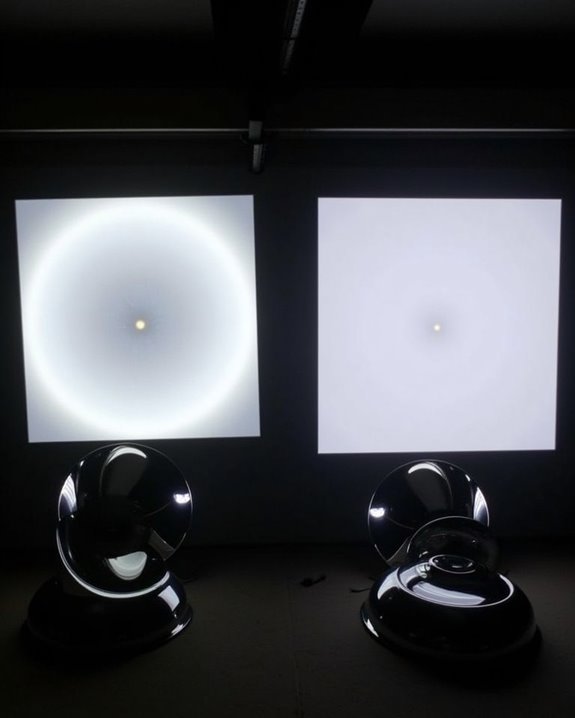
To truly understand why some headlights appear brighter or more focused, you need to examine how lenses and reflectors manage light inside each system. Projector headlights use a condenser lens to focus and magnify light, producing a sharp cutoff and intense, even beam across the road, which minimizes glare and enhances safety for all drivers. The lens also supports higher color temperature bulbs, such as HID or LED, further increasing brightness and efficiency. In contrast, reflector headlights use a mirrored bowl without a lens, resulting in broader, less focused beams that can cause more glare and uneven light distribution. When considering material durability, projector lenses are often made from high-quality glass or polycarbonate, offering longer-lasting performance compared to the simpler, often metal-based reflector bowls. Projector headlights generally outperform reflectors in brightness and beam focus, making them a preferred choice in modern automotive lighting.
Comparing Light Sources: HID, LED, and Projector Lamps
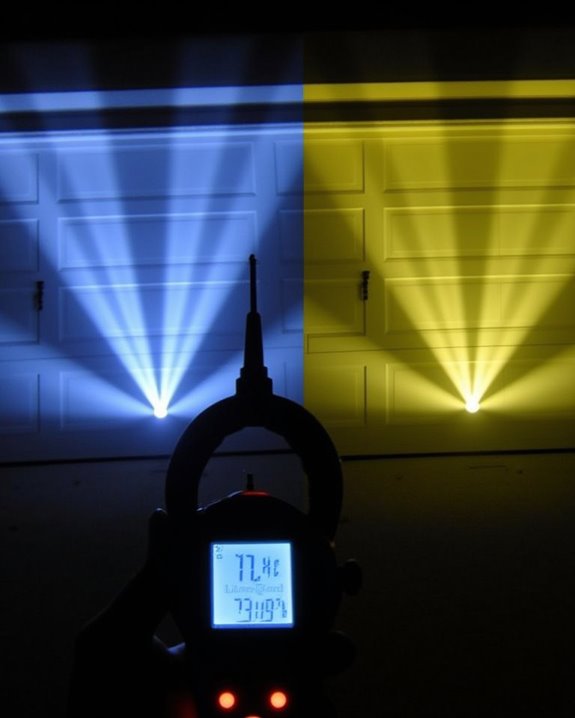
When comparing light sources like HID, LED, and projector lamps, it’s important to understand how each technology produces and delivers light, as this directly affects brightness, efficiency, and overall performance. HID lights use electrical discharges through gases, offering high brightness but with greater energy consumption and significant heat production. LEDs, on the other hand, are highly efficient, converting most energy into light with minimal heat, reaching up to 120 lumens per watt and often featuring a higher color temperature that mimics natural sunlight. Projector lamps are specifically engineered for image projection, prioritizing controlled brightness and color temperature but generally consuming more energy per lumen. In automotive applications, headlight housing type can dramatically impact the measured brightness and effectiveness of any light source, making compatibility a key consideration. Consider these differences:
- LED lights offer superior energy efficiency and longer lifespan.
- HID lights provide intense brightness but generate more heat.
- Projector lamps optimize light for display, not raw brightness.
Application-Specific Design and Its Impact on Brightness
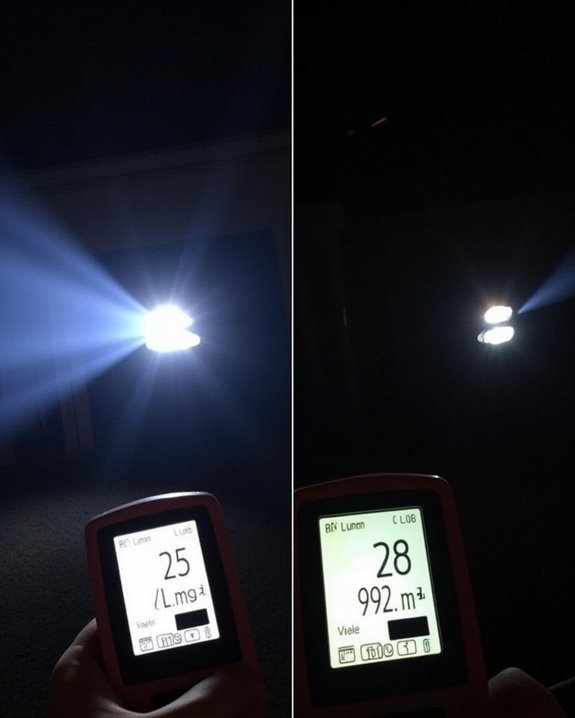
Although both automotive projector headlights and standard TV projectors rely on advanced optical systems, their application-specific designs fundamentally shape how bright they appear and how effectively they use light. When you look at projector headlights, you’ll notice they’re engineered for tightly controlled, intense beams, using a curved reflector and condenser lens to focus light with minimal scatter—ideal for road visibility and glare reduction. The built-in shutter lets you switch between high and low beams, optimizing brightness for driving conditions, while bulb upgrades like HID or LED can alter brightness, color temperature, and power consumption. In contrast, TV projectors maximize broad, even light output for large image projection, emphasizing lumen output and screen uniformity rather than directional beam control, making their brightness more diffuse and less application-specific. Both produce the same total light output, but the difference lies in how each system manages beam pattern and distribution for its intended use.
Measuring Brightness: Lumens, Candela, and ANSI Lumens
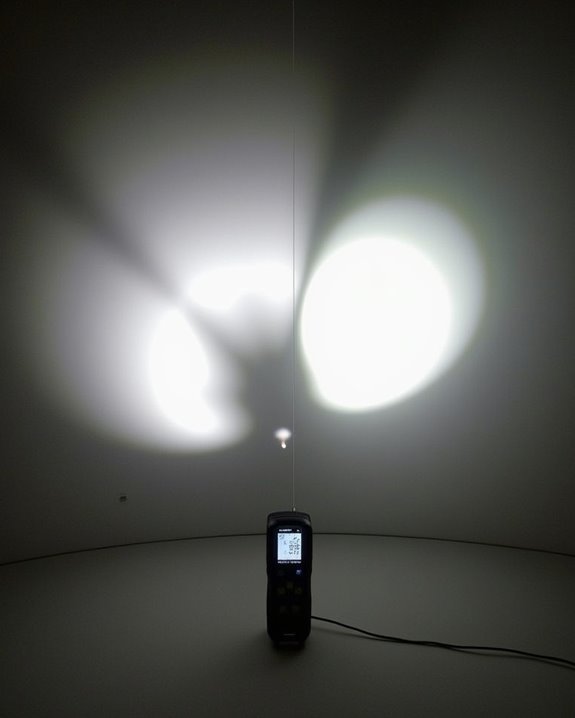
Understanding how brightness is measured in both projector headlights and standard TV projectors means looking at more than just how much light is produced—it’s also about how that light is directed and perceived in real-world use. Lumens measure the total visible light output, with automotive headlights typically generating 1,000–3,000 lumens and TV projectors’ UHP lamps reaching up to 9,000 lumens. However, candela is essential for headlights, measuring how intensely light is focused in a single direction, which impacts road visibility and glare. For TV projectors, ANSI lumens offer a standardized way to compare brightness on a screen, taking into account color temperature and energy efficiency. These metrics can’t be directly compared, as each serves a unique purpose.
Notably, UHP lamps in standard TV projectors are capable of achieving brightness levels far beyond what typical automotive headlights can provide, with some UHP lamps producing up to 9,000 lumens or more in controlled environments.
- Lumens vs. candela: direction and intensity matter
- ANSI lumens: standardized for projector brightness
- Color temperature and energy efficiency affect measurements
Perception of Brightness in Real-World Scenarios
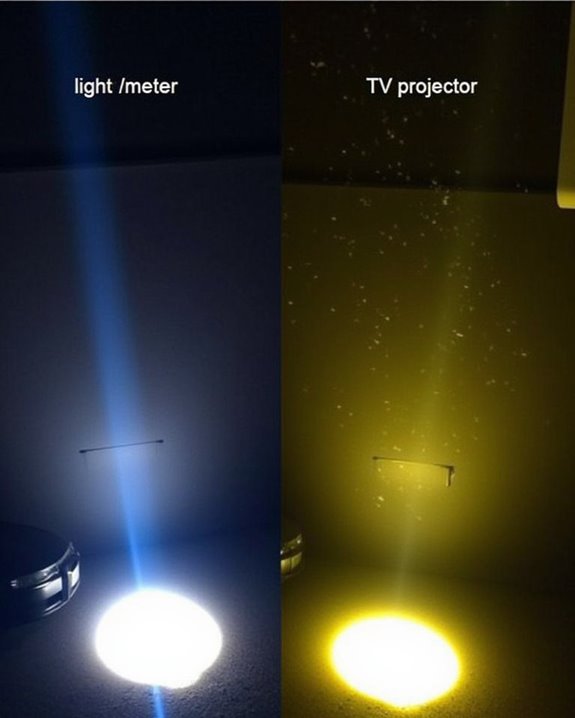
Since brightness isn’t just about raw light output, your perception of how bright projector headlights or standard TV projectors appear in real-world situations depends on several technical factors, including the focus and pattern of the light beam, the type of light source, and the surrounding environment. Projector headlights use a focused, condensed beam pattern, providing a sharp cutoff that enhances visibility and glare reduction, especially in low-light or adverse weather. Their color temperature, particularly with HID bulbs, produces a cooler, whiter light, which your eyes often interpret as brighter compared to warmer tones. In contrast, standard TV projectors deliver very high lumens but distribute light broadly, making brightness perception dependent on screen size, ambient light, and color temperature. Environmental factors and human eye adaptation also play significant roles. Additionally, projector headlights generally provide a sharper, more concentrated beam pattern for better visibility, which means that drivers may perceive them as brighter and more effective for nighttime driving compared to the diffused output of standard TV projectors.
Limitations and Trade-Offs of Each Lighting Solution
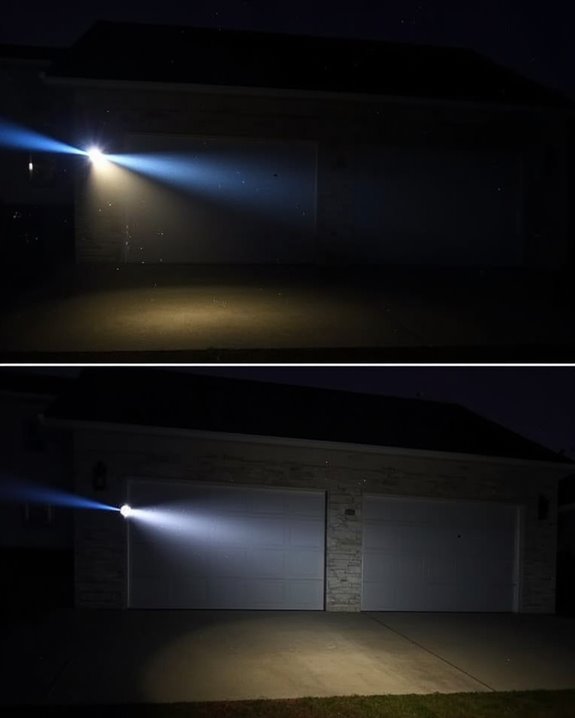
While both projector headlights and standard TV projectors are designed to deliver high-intensity light, each comes with specific limitations and trade-offs shaped by their intended applications and underlying technology. Projector headlights offer precise beam control but require exact bulb alignment, and their compact, enclosed design makes bulb replacement challenging, often increasing manufacturing costs. On the other hand, standard TV projectors, especially those using UHP lamps, prioritize color accuracy and image quality but demand robust cooling systems due to high temperatures and power consumption. Their lamps have limited lifespans and can be costly to replace, while the projectors themselves are typically bulkier.
- Projector headlights are sensitive to dirt or lens damage, which can degrade light output.
- TV projectors carry risks of lamp explosion and require significant cooling.
- Both technologies involve higher complexity and manufacturing costs than simpler alternatives.
Frequently Asked Questions
Can Projector Headlights Be Used as Light Sources for Home Projectors?
Don’t try fitting a square peg in a round hole—automotive lighting like projector headlights just won’t shine for home entertainment. They lack the brightness, beam spread, and color accuracy needed for proper image projection in your living room.
Do Projector Headlights Consume More Power Than TV Projectors?
You’ll find that projector headlights have higher power consumption than TV projectors. While they’re designed for brightness and visibility, TV projectors focus on efficiency for home use, so they generally use less power and are more energy-efficient.
Are Projector Headlights Legal to Retrofit on All Vehicle Models?
You can’t retrofit projector headlights on all vehicles without checking vehicle compatibility and local retrofit regulations. Some models need extra modifications, and laws vary, so you’ll need to verify legal requirements and guarantee proper installation for safety.
How Long Do Projector Headlights Last Compared to TV Projector Bulbs?
When it comes to headlight longevity, you’re in for the long haul—projector headlights can shine for up to 25,000 hours, easily outlasting TV projector bulb lifespan, which typically taps out around 2,000 to 5,000 hours.
Can Projector Headlights Be Damaged by Water or Extreme Weather?
You should know projector headlights can suffer water damage if seals fail, despite some weather resistance. Extreme weather—like heavy rain, snow, or sun—can compromise their integrity. Regular checks and maintenance help prevent costly repairs from water or weather exposure.

